Links to external sources may no longer work as intended. The content may not represent the latest thinking in this area or the Society’s current position on the topic.
Prospects for high gain inertial fusion energy
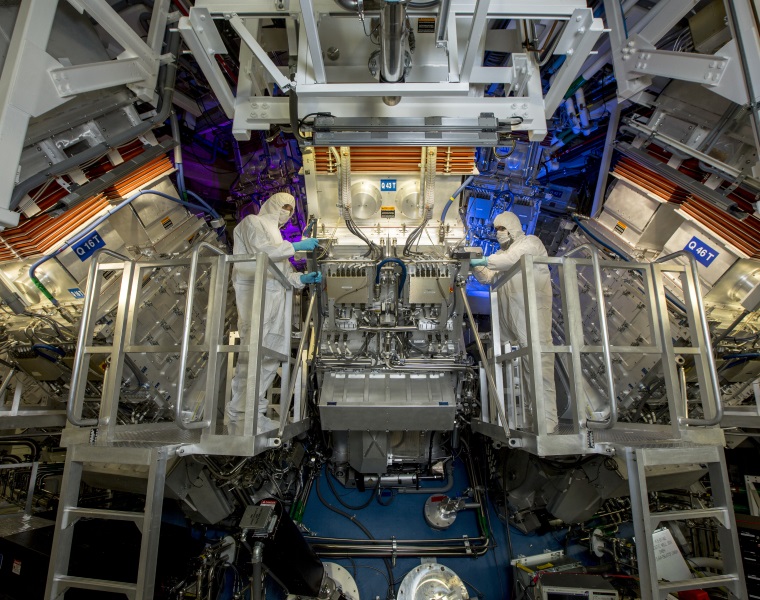
Scientific discussion meeting organised by Professor Peter Norreys, Dr Kate Lancaster, Professor Mark Koepke, Professor George Tynan and Dr Christopher Ridgers.
Inertial fusion is a grand challenge for humanity and promises many disruptive scientific applications, including nucleosynthesis of high-Z elements, future power generation and the brightest possible source for neutron scattering science. This meeting brought together the world’s leading scientists and policy advocates to begin preparations for the next generation facilities that enable movement directly to high energy gain.
Recorded audio of the presentations is available below. Accompanying journal issues for this meeting were published in Philosophical Transactions of the Royal Society A: part 1 and part 2.
Enquiries: contact the Scientific Programmes team
Organisers
Schedule
Chair
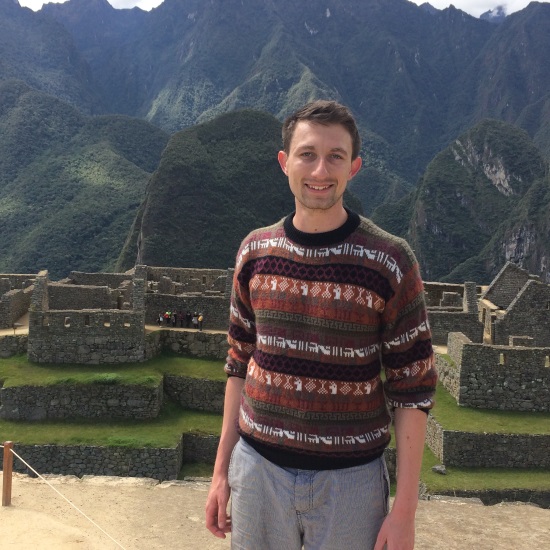
Dr James Sadler, Los Alamos National Laboratory, USA

Dr James Sadler, Los Alamos National Laboratory, USA
James is originally from Birmingham and studied for his physics undergraduate and PhD degrees at the University of Oxford, attending first Wadham college and then Wolfson college. His supervisor was Professor Peter Norreys. His background includes experiment and theoretical work around high power lasers and amplification of lasers in a plasma. During this time, he spent two months working in the laboratory of Professor Dustin Froula at the laboratory for laser energetics in Rochester, USA. He was then awarded an EPSRC doctoral thesis prize, allowing development of new models of kinetic effects and magnetic fields in fusion implosions. He has recently moved to a postdoctoral position at LANL to continue this work.
| 09:00 - 09:05 | Welcome by the Royal Society & Dr Kate Lancaster | |
|---|---|---|
| 09:05 - 09:30 |
Preparations for a European R&D roadmap for an inertial fusion demo reactor
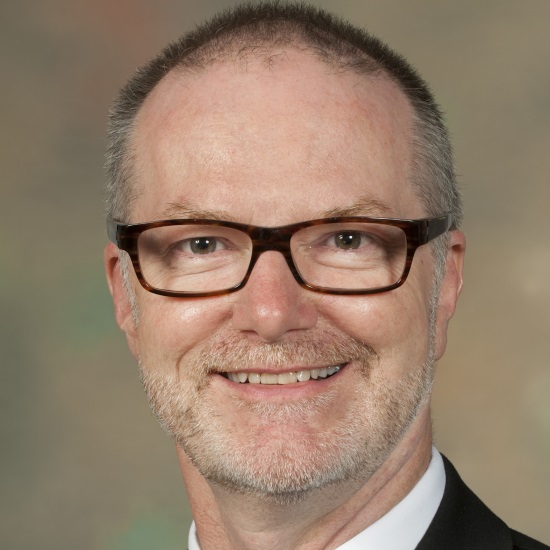
Professor Peter Norreys, Department of Physics, University of Oxford, UK

Professor Peter Norreys, Department of Physics, University of Oxford, UKPeter Norreys is Professor of Inertial Fusion Science at the University of Oxford and is an Individual Merit Fellow of the Science and Technology Facilities Council. He graduated from Royal Holloway College, University of London, in 1989 and spent one year as a Japan Society for the Promotion of Science Post-Doctoral Fellow at Osaka University Japan. He joined the Rutherford Appleton Laboratory in 1990 on his return to the United Kingdom and has been involved in the study of relativistically intense laser-plasma interactions since then. He was awarded the 2013 Institute of Physics' Payne-Gaposchkin Medal and Prize for his original contributions to relativistic laser-plasma interaction physics. He has also received the 2006 American Physical Society’s Award for Excellence in Plasma Physics Research for his contributions to inertial fusion science and, as UK team leader, the 2007 Daiwa Adrian Prize for UK-Japan collaborative investigations into new areas of high energy density science. He is currently William Penney Fellow of AWE, a Fellow of the Institute of Physics and of the American Physical Society and is a visiting Professor to Imperial College London. |
|
| 09:30 - 09:45 | Discussion | |
| 09:45 - 10:15 |
Beyond the physics and demonstration of ignition
Fusion holds the promise of providing growing world energy demand with a carbon-free power source having a universally available fuel source and attractive safety and environmental characteristics. A significant world effort has been underway for over 50 years aimed at the achievement of fusion by inertial confinement. The effort to date has necessarily emphasised understanding the physics of compressing and heating a small amount of fusion fuel to the high densities and temperatures required for ignition and energy gain. Though steady progress has been, and is still being, made to achieve the required physics understanding and energy gain, those goals have not yet quite been met. In preparing a roadmap from present achievements to the ultimate goal of commercial fusion power requires formally identifying and implementing complementary efforts on a number of fronts. These include the choice, development and demonstration of high repetition rate compression drivers (eg lasers) to succeed present day single pulse sources; design, fabrication and testing of high gain targets (gain of order 100); development of mass production, cost-effective, target fabrication and delivery systems capable of inserting targets into the reaction chamber several times per second, and demonstrating ability to accurately hit and efficiently compress those targets to reliably produce the required fusion yields; design and demonstration of reaction chambers capable of handling energy yields and target debris clearing at the levels required for achieving high power plant reliability with low induced radioactivity. A robust ongoing effort on competitive power plant conceptual design is necessary to guide the implementation of the roadmap, including the timing and level of effort on the “beyond ignition” demonstrations. 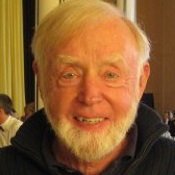
Dr Stephen O Dean, Fusion Power Associates, USA

Dr Stephen O Dean, Fusion Power Associates, USADr Stephen O Dean has worked on the development of fusion for energy for over 50 years. In 1966 he co-authored the United States Atomic Energy Commission’s Policy and Action Plan for Controlled Thermonuclear Research. In 1976, he led the preparation of a fusion plan that provided the basis for the Magnetic Fusion Energy Engineering Act of 1980. In 1979, he co-founded Fusion Power Associates (http://fusionpower.org) a non-profit research and educational foundation. He currently serves as its president. He holds a BS Physics from Boston College, SM Nuclear Engineering from MIT and Physics PhD from the University of Maryland. His PhD thesis involved experiments on laser-produced plasmas while working at the US Naval Research Laboratory (1969–1972). His book Search for the Ultimate Energy Source (Springer, 2013) traces the history of the US fusion program from its inception. He is a Fellow of the American Nuclear Society. |
|
| 10:15 - 10:30 | Discussion | |
| 10:30 - 11:00 | Coffee break | |
| 11:00 - 11:30 |
Political and commercial prospects for inertial fusion energy
Fusion energy holds the prospect of an energy source that is clean, safe, affordable, and limitless. It will transform the global energy system. Today, over $1 billion in private capital has been invested in companies that are working on transformative approaches to fusion. Annually, even more than that is spent on fusion research by governments around the world. However, just achieving a scientific demonstration of fusion power will not be enough on its own to transition the global energy system. It will require innovations in the legal, regulatory, commercial, and political spheres to support the massive deployment of fusion power that we know will be necessary to meet the global challenges of climate change and energy scarcity. That means, we need a global partnership combining scientific, political, government, and media expertise to build the fusion energy economy that will support the massive global deployment. The Fusion Industry Association (FIA) is the unified voice of the fusion industry, working to transform the energy system with commercially viable fusion power. Only founded in 2018, the FIA has already succeeded in creating new multi-million-dollar public–private partnership programs with the US Department of Energy. To support that transition, the FIA has three strategic priorities for accelerating fusion energy: 1) partnering with governments: the private sector should have access to the scientific research that governments have pursued for decades. Public–private partnerships that include government support to private fusion companies can rapidly accelerate fusion development by driving private financial support. 2) Building a fusion movement: the world should know how important clean, safe, affordable, and secure fusion will be to the future energy system. FIA is educating key stakeholders in the private, public, and philanthropic sectors about the importance of tomorrow’s fusion power economy. 3) Ensuring regulatory certainty: fusion research, development, and deployment should be subject to appropriate, risk-informed regulation when experiments are built and sited. In addition to strategic priorities of the FIA, this talk will discuss the specific aspects of inertial fusion energy that present commercial and political advantages. 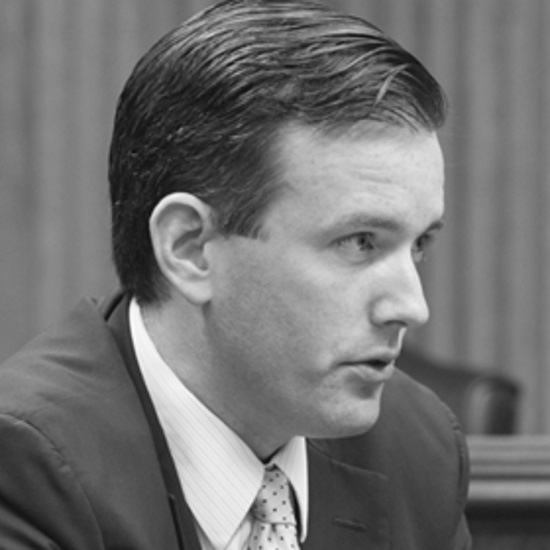
Mr Andrew Holland, Fusion Industry Association, USA

Mr Andrew Holland, Fusion Industry Association, USAAndrew Holland is the Executive Director of the Fusion Industry Association (FIA). Located in Washington, DC, Holland has worked at the intersections of science, energy, policy, and politics for two decades. He’s the author of the “Fusion Power – A 10 Year Plan for American Energy Security,” first published in 2013, laying out a roadmap for American leadership in fusion. Since creating the FIA in 2018, he has brought together 20 of the leading fusion companies to jointly coordinate on areas of common interest. He has advocated for commercial fusion power with the highest levels of governments, coordinated with regulators, and pitched private investors for greater support to fusion. He holds a MSc. in International Strategy and Economics from the University of St. Andrews and currently resides in Alexandria, VA. |
|
| 11:30 - 11:45 | Discussion | |
| 11:45 - 12:15 |
How might controlled fusion fit into the emerging low-carbon energy system of the mid-21st century?
Professor Tynan and his team examine the characteristics that fusion technology will need to have if it is to survive in the emerging low-carbon energy system of the mid-21st century. It is likely that the majority of future electric energy demand will be provided by the lowest marginal cost energy technology, which in many regions will be stochastically varying renewable solar and wind electric generation coupled to systems that provide a few days of energy storage. Firm low-carbon/zero-carbon resources based on gas-fired turbines with carbon capture, advanced fission reactors, hydroelectric and perhaps engineered geothermal systems will then be used to provide the balance of load in a highly dynamic system operating in competitive markets governed by merit-order pricing mechanisms that select the lowest-cost supplies to meet demand. These firm sources will have overnight capital costs in the range of a few $/Watt, be capable of cycling down to a fraction of their nameplate capacity, operate at low utilisation fraction, and have a suitable unit size probably of order 100MW. If controlled fusion using either magnetic confinement or inertial confinement approaches is to have any chance of providing a material contribution to future electrical energy needs, it must demonstrate these key qualities and at the same time prove robust safety characteristics that avoid the perceived dread risk that plagues nuclear fission power, avoid generation of long-lived radioactive waste, and demonstrate highly reliable operations. *Acknowledgements: Professor George Tynan wishes to acknowledge important discussions with David Victor, Ryan Hanna, Michael Davidson, Ahmed Abdulla and Jesse Jenkins. 
Professor George Tynan, UC San Diego, USA

Professor George Tynan, UC San Diego, USAProfessor Tynan's current research is focused on the plasma physics of controlled nuclear fusion as an energy source. He studies the fundamental physics of turbulent transport in hot confined plasmas using both smaller scaled laboratory plasma devices as well as large scale fusion experiments located around the world. In addition, he is investigating how solid material surfaces interact with the boundary region of fusion plasmas, and how the materials are modified by that interaction. He is also interested in the larger issue of transitioning to a sustainable energy economy based upon a mixture of efficient end use technologies, large scale deployment of renewable energy sources, and incorporation of a new generation of nuclear technologies such as advanced fission and fusion reactor systems. He received his PhD in 1991 from the Department of Mechanical, Aerospace, and Nuclear Engineering at the University of California, Los Angeles. He then spent several years studying the effect of sheared flows on plasma turbulence on experiments located in the Federal Republic of Germany and at Princeton Plasma Physics Laboratory and joined the UCSD faculty in 1999. |
|
| 12:15 - 12:30 | Discussion |
Chair
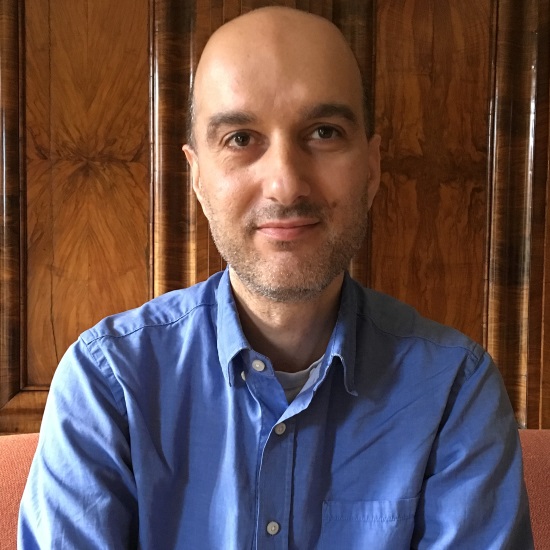
Professor Gianluca Gregori, University of Oxford, UK

Professor Gianluca Gregori, University of Oxford, UK
Professor Gregori is Fellow of the American Physical Society and Fellow of the Institute of Physics. He started at Oxford University in 2007 as an RCUK Fellow in the Department of Atomic and Laser Physics. In 2012 he became Fellow and Tutor of Physics at Lady Margaret Hall, and in 2013 he was appointed Professor of Physics. From 2001 to 2005 Professor Gregori worked at the Lawrence Livermore National Laboratory (USA), in the Fast Ignitor Physics group within the ICF Program. He was a post-doctoral researcher from 2001 to 2003 and then appointed as staff scientist. From 2005–2012, Professor Gregori has been holding a senior experimental scientist position at the Rutherford Appleton Laboratory. In 2014 Professor Gregori was awarded the Edouard Fabre International Scientific prize for contribution to the physics of inertial fusion and of laser-produced plasmas and in 2019 the John Dawson Award for excellence in plasma physics. He holds a PhD and a MS from the University of Minnesota (Minneapolis, USA) and a MS from the University of Bologna (Italy). Professor Gregori's research interests cover laboratory astrophysics with high power lasers, dense plasmas as found in the interior of stars and planets, and inertial confinement fusion (ICF) energy.
| 13:30 - 14:00 |
Inertial confinement fusion: a defence context
Almost 30 years since the last UK nuclear test it remains necessary to regularly underwrite the safety and effectiveness of the National Nuclear Deterrent. To do so has been possible to date because of the development of continually improving science and engineering tools running on ever more powerful High-Performance Computing platforms and underpinned by cutting edge experimental facilities. While some of these facilities, such as the Orion laser, are based in the UK, others are accessed by international collaboration. This is most notably with the USA via capabilities such as the National Ignition Facility (NIF), the Dual Axis Radiographic Hydrodynamic Test Facility (DARHT) and the Los Alamos Neutron Science Centre (LANSCE) to name but a few, but also with France where a joint hydrodynamics facility is nearing completion following establishment of a Treaty in 2010. Despite the remarkable capability of the science and engineering tools, there is an increasing requirement for experiments as materials age and systems inevitably evolve further from what was specifically trialled at underground nuclear tests (UGTs). While the data from such tests will remain the best possible representation of the extreme conditions generated in a nuclear explosion, it is also essential that new capabilities are realised that will bring us closer to achieving laboratory simulations of these conditions. For High Energy Density Physics the most promising technique for generating temperatures and densities of interest is Inertial Confinement Fusion (ICF). We will therefore need ICF for Certification of the deterrent in decades to come and hence work closely with the international community to develop this science. 
Professor Andrew Randewich, AWE plc, UK

Professor Andrew Randewich, AWE plc, UKAfter completing a PhD in plasma physics, Andrew joined AWE in 1997 in the High Altitude Nuclear Effects Team where he developed a novel capability to model Nuclear Induced Van Allen Belts, worked on Electromagnetic Pulse phenomenology, and won the Discovery Award for Early Career Scientific Innovation. Andrew later worked on thermonuclear burn modelling in support of Inertial Confinement Fusion and as a Team Leader in the Computational Physics Group. Since then, Andrew managed the Physics Certification programme and later led the High Performance Computing Group where he was involved in the procurement and installation of some of the largest computers in the UK. After acting as Head of Design Physics, Andrew was appointed Head of Plasma Physics in 2011. The Department’s main role is using high power lasers to underwrite high energy density physics simulations. Andrew was Asset Manager for the ORION laser, one of the largest science capital investments in the UK and managed several other science facilities. Also in 2011, Andrew became Head of Profession for Physics and in 2013 moved to be AWE Chief Scientist in which role he assured AWE Science and Capability and led the company’s Strategic External Outreach. He is now Head of Physics comprising 550 staff. Andrew was appointed as a visiting Professor at Imperial College, London in 2012, and is a Chartered Physicist, a Chartered Engineer and a Fellow of the Institute of Physics. Andrew was part of the 2015 Review of the US NNSA Inertial Confinement Fusion and High Energy Density Science Review in 2015 and sits on the NIF Management Advisory Committee and NNSA’s 2020 ICF, Ignition and High Yield Red Team Review Panel. |
|
|---|---|---|
| 14:00 - 14:15 | Discussion | |
| 14:10 - 14:45 |
Perspectives on high-energy-density science and inertial confinement fusion
At the Lawrence Livermore National Laboratory, the need to ensure the continuing reliability of the US nuclear deterrent has been the driver for a remarkable set of scientific advances in theory, computation, and experiments. In particular, the need to probe the physics of fusion ignition and matter at extremes of temperature, pressure, and density has driven extensive focus on high-energy-density (HED) science and inertial confinement fusion (ICF) research. Novel experimental platforms and a wide range of diagnostic tools are delivering data to improve our models of hydrodynamic behavior, radiation transport, and material properties and to address the known barriers to fusion ignition. These ever-growing experimental opportunities provide a rich environment for developing the skills of our next-generation workforce and building collaborations with the worldwide HED community. LLNL-ABS-805614 This work is performed under the auspices of the US Department of Energy by Lawrence Livermore National Laboratory under Contract DE-AC52-07NA27344. 
Dr Kimberly S Budil, Lawrence Livermore National Laboratory, USA

Dr Kimberly S Budil, Lawrence Livermore National Laboratory, USAKim Budil is the Principal Associate Director for Weapons and Complex Integration at Lawrence Livermore National Laboratory (LLNL). She is responsible for the programs that ensure the safety, security, and effectiveness of the Nation’s nuclear deterrent and advancing the supporting science, technology, and engineering capabilities of the Stockpile Stewardship Program (SSP). Prior to this, she served as the Vice President for National Laboratories at the University of California Office of the President (UCOP) where she led the University’s oversight and governance of LLNL, Lawrence Berkeley National Laboratory (LBNL), and Los Alamos National Laboratory (LANL). She has served on many committees, including the LLNS/LANS Mission Committee and the National Academies Committee on International Security and Arms Control (CISAC), and has served as a board member for the Hertz, LANL, and Livermore Lab Foundations. Prior to joining UCOP, Budil worked for nearly three decades at LLNL. She joined LLNL in 1987 as a graduate student and held a variety of increasingly responsible positions across the Laboratory working in Weapons and Complex Integration, National Ignition Facility, Physical and Life Sciences, and Global Security. She served twice as a detailee in Washington, DC, most recently in 2009, spending nearly two years as a Senior Adviser to the Under Secretary for Science at the Department of Energy (DOE). She has MS and PhD degrees in Applied Science/Engineering from University of California, Davis and a BS in Physics from the University of Illinois at Chicago. Dr Budil also completed a certificate in National Security Affairs from the Bush School at Texas A&M University. |
|
| 14:45 - 15:00 | Discussion | |
| 14:50 - 15:10 |
Title tbc
From Bethe to Betti, fusion research and the exploration of ‘hot’ science has been part of US and UK lexicons since the 1940s. Since that time, the search for ways to understand, contain, and use the energy of fusion has been part of nationwide research efforts in government, industry, and academia. This talk will cover past, present, and future highlights and opportunities in the area of inertial confinement fusion for stockpile stewardship. 
Dr Njema J Frazier, NNSA Office of Experimental Sciences, USA

Dr Njema J Frazier, NNSA Office of Experimental Sciences, USADr Njema J Frazier is a member of the Senior Executive Service and the Director of the Office of Experimental Sciences at the Department of Energy, National Nuclear Security Administration (NNSA). As Director, Dr Frazier serves as a senior expert in the field of experimental sciences and related research and development, as applied to the behavior and reliability of nuclear weapons. Dr Frazier has been with NNSA since 2001 and has previously served as Physicist, Acting Deputy, and Acting Director for a number of NNSA’s flagship scientific and technical programs established to ensure the United States maintains a safe, secure and effective nuclear weapons stockpile without explosive nuclear testing. Prior to joining the NNSA, Dr Frazier was a professional staff member for the US House of Representatives Committee on Science. A long-time trailblazer in science, Frazier was the first African-American woman to graduate with a physics degree from Carnegie Mellon University, as well as the first to receive a PhD in nuclear physics from Michigan State University. |
|
| 15:10 - 15:15 | Presentation | |
| 15:15 - 15:35 | Tea break | |
| 15:35 - 16:05 |
Direct Drive Laser Fusion, status, plans and future
Laser direct drive (LDD), along with laser indirect (x-ray) drive (LID) and magnetic drive with pulsed power is one of the three viable approaches to achieving fusion ignition and gain in inertial confinement fusion (ICF). In this talk the present status and future plans for LDD will be presented. The program is being executed on both the OMEGA at Laboratory for Laser Energetics (LLE) and the National Ignition Facility (NIF) and Lawrence Livermore National Laboratory (LLNL). LDD research on OMEGA includes cryogenic implosions, fundamental physics including material properties, hydrodynamics, and laser-plasma interaction physics. LDD research on NIF is focused on energy coupling and laser plasma interactions physics at ignition scale plasmas. Limited implosions on NIF in the ‘Polar Drive’ configuration where the irradiation geometry is optimised for LID are also a feature of LDD research. LDD implosions on OMEGA, developed by a statistical data based model that employs machine learning, have achieved record performance and hydrodynamically scaled to NIF energies would be predicted to produce fusion yields approaching a MegaJoule. Systematic experiments enabled by the high shot rate of OMEGA and advanced diagnostics to explore three dimensional implosion performance are routinely fielded to understand degradation mechanisms that limit the fusion performance and to develop mitigation strategies. Laser-plasma interaction (LPI) physics continues to be a major focus of LLD research. Innovative diagnostics for example that measure electron distribution functions on a single shot and increased laser/facility capabilities that enable a quantitative understanding of LPI over a range of plasma conditions created at both OMEGA and NIF have advanced our understanding of LPI. The present state of research and future plans to eventually determine acceptable operating parameters and laser requirements for LDD ignition will be presented. All present major ICF facilities are based on laser science and technology developed decades ago. To increase the operating space for target designs, LLE has developed a concept for producing a broadband (bandwidth >10 THz) UV laser with a flexible pulse format. This concept and plans for demonstrating the laser and conducting experiments on both LPI suppression and laser imprint will also be discussed in the presentation. 
Dr Mike Campbell, Director Laboratory for Laser Energetics, University of Rochester, USA

Dr Mike Campbell, Director Laboratory for Laser Energetics, University of Rochester, USAE. Michael Campbell is the Director of the Laboratory for Laser Energetics. Dr Campbell received his BSc in Engineering and Applied Science (1972) from the University of Pennsylvania, his MSc in Applied Physics (1974) from Princeton University, and his Doctor of Science (2005) from the University of Western Sydney. After positions as Associate Director of Laser Programs at Lawrence Livermore National Laboratory, Senior Vice President, Energy Group, at General Atomics, Director of Energy Systems at Logos Technologies, and Senior Scientist at Sandia National Laboratories, he joined the University of Rochester's Laboratory for Laser Energetics (UR/LLE) in 2015. Dr Campbell is an internationally known expert in inertial fusion, high-energy-density physics, high power lasers and their applications, and advanced energy technologies including Generation IV nuclear fission reactors and biofuels. He has won numerous awards including the Department of Energy’s E. O. Lawrence Award, American Physical Society’s John Dawson Award, the American Nuclear Society’s Edward Teller Award, and the Leadership Award of Fusion Power Associates. He is a Fellow of the American Physical. He holds four patents (and one pending) and has published over 200 articles in the scientific literature. Dr Campbell has been a member of numerous committees providing advice and strategy, including the National Academy of Sciences, Los Alamos National Laboratory, Berkeley National Laboratory, University of Texas, the National Research Council of Canada, and Lockheed Martin Corporation. He presently serves on the Board of Evans and Southerland Corporation. |
|
| 16:05 - 16:15 | Discussion | |
| 16:15 - 16:45 |
Progress and opportunities for inertial fusion energy in France and Europe
In this talk, Professor Tikhonchuk will consider the motivation, recent results and perspectives for the ICF studies conducted in Europe in collaboration with other research laboratories worldwide. After recalling the basic principles of the inertial fusion and its major advantages and issues, he will advocate the European approach based on the direct drive scheme with the preference for the central ignition boosted by a strong shock. It was chosen about ten years ago within the framework of the HiPER project, and the collaboration is maintained thanks to the support of the EuroFusion consortium. Compared to other schemes, shock ignition offers a higher gain needed for design of a future commercial reactor and relatively simple and technological targets, but implies a more complicated physics of laser-target interaction, energy transport and ignition. Unfortunately, Europe today does not dispose a laser installation allowing integrated ICF experiments. Consequently, the Europe laboratories are addressing physical issues of shock ignition scheme related to the target design, laser plasma interaction and implosion by the code developments and conducting experiments in collaboration with US and Japanese physicists providing access to their installations Omega and Gekko XII. Some examples of the resent results will be presented. The ICF research in Europe can be further developed only if European scientists will acquire their own academic laser research facility specifically dedicated to the controlled fusion energy. It should not be limited to the ignition issues but aim beyond ignition to the physical, technical, technological and operational problems related to the future fusion power plant. Such a programme may be realised only if the ICF community demonstrate to the political deciders that there is a critical mass of scientists and a significant amount of scientific and technical knowledge guaranteeing the success. Professor Tikhonchuk will show that indeed, there are strong arguments for that. Compared to the magnetic confinement, inertial confinement offers more compact and less expensive reactors, much smaller tritium inventory and a more efficient modular design. Recent results show significant progress in: i) our understanding and simulation capabilities of the laser plasma interaction and implosion physics; ii) our understanding of materials behaviour under strong mechanical, thermal and radiation stresses; and iii) commissioning at ELI Beamlines the first high energy laser facility with a high repetition rate opens opportunity for qualitatively innovative experiments. Professor Tikhonchuk believes that by consolidating these achievements and better organising European scientific community we may build a new international project for the inertial fusion energy in Europe. 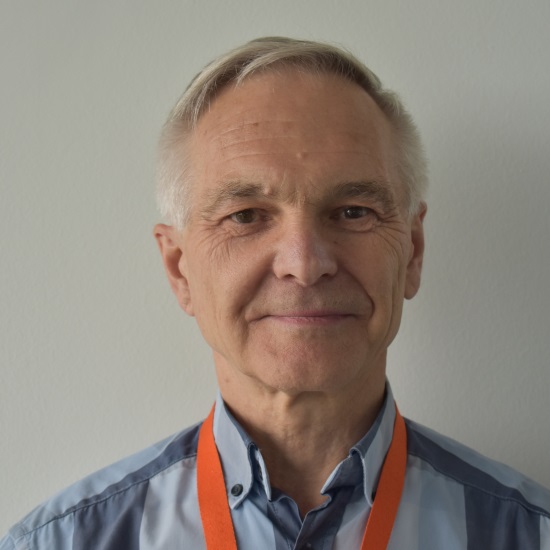
Professor Vladimir Tikhonchuk, CELIA, University of Bordeaux, France

Professor Vladimir Tikhonchuk, CELIA, University of Bordeaux, FranceVladimir Tikhonchuk is recognized for his contributions to the understanding of laser-plasma coupling, laser-driven parametric instabilities, electron energy transport and the original design of alternative schemes for inertial confinement fusion. After receiving his PhD from the Moscow Engineering Physics Institute in 1974, he joined the P. N. Lebedev Physical Institute, Russian Academy of Sciences, Moscow where he received a Doctor of Science degree in 1987. From 2001 to 2017 he has been professor at the University of Bordeaux and leader of theoretical plasma group at the Centre Lasers Intenses et Applications (CELIA). After his retirement in 2017 he is Professor Emeritus at the University of Bordeaux and consulting the ELI-Beamline laboratory at the Institute of Physics, Czech Academy of Sciences in Prague. He was recognized in 2008 becoming a Senior Member of the Institut Universitaire de France, and in 2017 received the Edward Teller Award from the American Nuclear Society. |
|
| 16:45 - 17:00 | Discussion | |
| 17:00 - 18:00 | Poster session |
Chair

Dr Ceri Brenner, UKRI – Central Laser Facility, UK

Dr Ceri Brenner, UKRI – Central Laser Facility, UK
Dr Ceri Brenner is a plasma physicist and the group leader for industry partnerships and innovation at the Science and Technology Facilities Council’s Central Laser Facility (CLF). She specialises in using the most powerful lasers in the world to develop innovative laser-based accelerator technology that impacts on imaging and inspection technology applied in nuclear waste management and aerospace performance testing, and in advanced modalities for therapeutic options in particle therapy. She leads a team of scientists who collaborate with companies from a wide range of sectors to boost industry R&D and productivity using CLF’s expertise and capabilities, and supports the innovation journey of in-house developments. In 2017 she was awarded the UK Institute of Physics’ Clifford-Paterson Medal and Prize for her significant early career contributions to the application of physics in an industrial context and in 2018 was awarded the Australian Institute of Physics Women in Physics lecturer.
| 09:00 - 09:30 |
Modelling burning thermonuclear plasmas
Considerable progress towards the achievement of thermonuclear burn using inertial confinement fusion has been achieved at the National Ignition Facility in the USA in the last few years. Other drivers, such as the Z-machine at Sandia, are also making progress towards this goal. A burning thermonuclear plasma would provide a unique and extreme plasma environment and this talk will look at Professor Rose and his team’s modelling of such a plasma. Professor Rose will also look at the connections that a burning thermonuclear plasma has to the study of fundamental physics, including QED studies and the replication and exploration of conditions that last occurred in the first few minutes after the Big Bang. 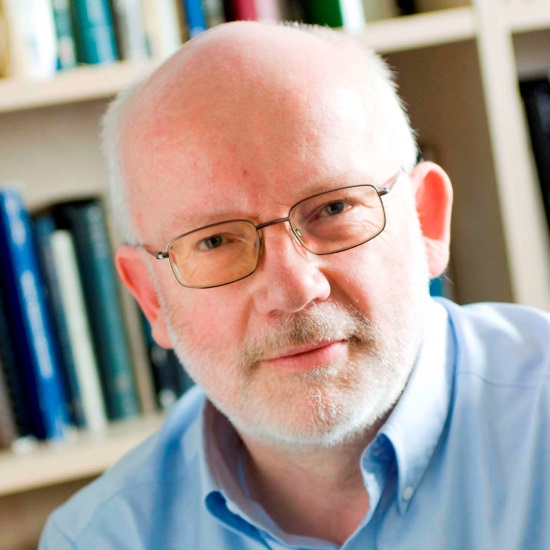
Professor Steven Rose, Imperial College London, UK

Professor Steven Rose, Imperial College London, UKProfessor Rose joined Imperial College in 2006 and since then has undertaken several roles at Imperial including the Head of Plasma Physics and the Vice-Dean of Natural Sciences. He has worked in plasma physics for all of his career, with a particular emphasis on plasmas produced using high-power lasers. He spent much of that time at the two high-power laser facilities in the UK: the Rutherford Appleton Laboratory’s Central Laser Facility where he became the Associate Director for Physics and at AWE Aldermaston where he was the Head of Plasma Physics. |
|
|---|---|---|
| 09:30 - 09:45 | Discussion | |
| 09:45 - 10:15 |
Studies on the double-cone ignition scheme
The laboratory demonstration of thermonuclear ignition has been the primary pursuit for decades for the research of inertial confinement fusion (ICF). While major progress has been made, significant challenges remain in the pursuit of ignition. In order to tackle the challenges, great international efforts have been made and various ignition schemes have been intensively investigated. In this talk, Professor Zhang shall review the current status of studies on advanced ignition schemes in the world, especially he shall introduce the double-cone ignition scheme. In this scheme, isentropic compression of fuels in double-cone configuration is reached by specially tailored ns laser pulses. The plasmas in the cones are then accelerated by a series of 100 ps shock pulses and the kinetic energy of the high-density plasmas is converted into internal energy by collisions of plasmas from the tips of the opposite cones. The colliding plasma with a density of over 300 g/cm3 and a temperature of 1 keV is then rapidly heated by magnetic field guided hot electrons to reach a temperature over 5 keV for hot spot ignition. Preliminary experimental results will be presented in this talk, with a detailed plan to upgrade Shenguang II laser facility to conduct demonstration experiments in steps. 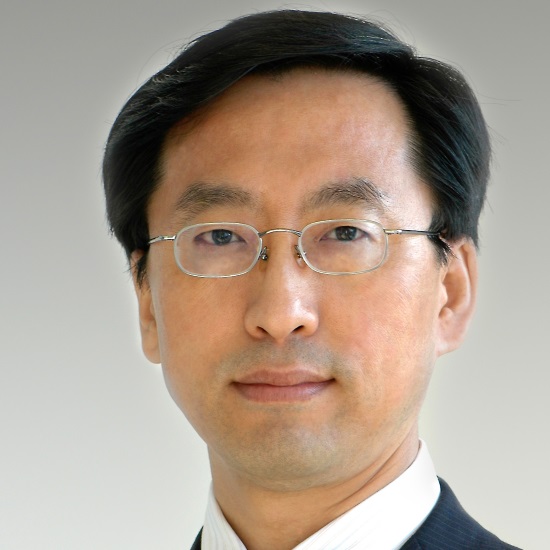
Professor Jie Zhang, Chinese Academy of Sciences and Shanghai Jiao Tong University, China

Professor Jie Zhang, Chinese Academy of Sciences and Shanghai Jiao Tong University, ChinaProfessor Jie Zhang is a prominent laser-plasma physicist and worked at the University of Oxford and Rutherford Appleton Laboratory in the period of 1991–1998, and has continued his research at the Institute of Physics of the Chinese Academy of Sciences and Shanghai Jiao Tong University since 1999. In 2015, he was awarded the Edward Teller Medal, the most prestigious prize in the field of ICF and high energy density physics, by the American Nuclear Society. He was elected the Foreign Associate of American National Academy of Sciences (2012), the Foreign Member of British Royal Academy of Engineering (2011), the Fellow of Third World Academy of Sciences (2008), the member of the German National Academy of Sciences Leopoldina (2007), Academician of the Chinese Academy of Sciences (2003). Professor Jie Zhang was the President of Shanghai Jiao Tong University (SJTU) in the period of 2006–2017. Under his leadership, SJTU made remarkable progress on its way to a world-class university. |
|
| 10:15 - 10:30 | Discussion | |
| 10:30 - 11:00 | Coffee break | |
| 11:00 - 11:30 |
Progress on inertial confinement fusion research at the National Ignition Facility and the implications for pursuit of inertial fusion energy
The National Ignition Facility (NIF), at Lawrence Livermore National Laboratory, is the world’s most energetic laser. NIF houses 192 beams that can deliver over 1.8 MJ of ultraviolet energy and peak powers of 500 TW to a small target (<< cm3). The deposition of this energy in a small volume creates extreme radiation environments and large pressures in materials. These very large pressures have been used to create unique conditions for studying the behaviour of matter at high energy densities. Understanding the behaviour of matter at high energy densities is important for our national security, fundamental science, and obtaining inertial confinement fusion ignition. In this talk an overview of the National Ignition Facility will be provided, and recent progress in high energy density science on NIF will be discussed. An update on the current status of, and future directions for, indirect drive inertial confinement fusion research on the NIF will be given. The progress in ignition research coupled with exciting advances in technology make it a good time to revisit the path forward for inertial fusion energy research and some potential next steps will be discussed. This work is performed under the auspices of the US Department of Energy by Lawrence Livermore National Laboratory under Contract DE-AC52-07NA27344. 
Dr Mark Herrmann, Lawrence Livermore National Laboratory, USA

Dr Mark Herrmann, Lawrence Livermore National Laboratory, USA |
|
| 11:30 - 11:45 | Discussion | |
| 11:45 - 12:15 |
Exploring the micro-physics of inertial confinement fusion
Large-scale inertial confinement fusion (ICF) experiments involve the creation of plasmas far from local thermodynamic equilibrium whose macroscopic behaviour depends on rapid kinetic processes. As these experiments are inherently complex these kinetic processes range from atomic kinetics to kinetic plasma transport and wave-plasma interactions among others. Capturing these effects in realistic models of full-scale ICF experiments necessarily involves much simplification which often limits predictive capability. We will discuss how experiments on small-scale facilities can be used to examine this ‘micro-physics’, improving our models. We will focus on our recent work on plasma transport, describing a simple platform for examining kinetic effects on electron transport (for example the Biermann Battery – an astrophysically relevant process). This model testing is particularly important for novel high-gain schemes, where the micro-physics is less certain. We will argue that such small-scale experiment therefore have an important role to play in routes to high-gain ICF. 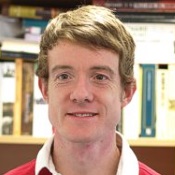
Dr Christopher Ridgers, University of York, UK

Dr Christopher Ridgers, University of York, UKDr Ridgers graduated from the University of Cambridge in 2003 with a MSci in Natural Sciences (first class honours) and completed his PhD at Imperial College London in 2008, on the subject of 'Magnetic Fields and Nonlocal Transport in Inertial Confinement Fusion Plasmas'. He moved to the University of Oxford in 2010, completing postdoctoral research into the importance of strong-field quantum electrodynamics in multi-petawatt laser-plasma interactions. In 2013 he was appointed a lecturer at the University of York and since 2018 has held the position of Senior Lecturer there. |
|
| 12:15 - 12:30 | Discussion |
| 13:30 - 14:00 |
Research and innovation infrastructure for the UK
The formation of UK Research and Innovation (UKRI) in 2018 was a significant development, providing the opportunity to strengthen links across different disciplines. One of the first projects undertaken by UKRI was work towards a UK Research and Innovation Infrastructure Roadmap, with the aim of putting in place a coherent, long-term strategic plan for investment in research infrastructure. In this talk, Professor Thomson will review the current status of this work and discuss a number of the issues and challenges. 
Professor Mark Thomson, UKRI-STFC, UK

Professor Mark Thomson, UKRI-STFC, UKProfessor Mark Thomson is Executive Chair of the Science and Technology Facilities Council (STFC). STFC, which is one of the nine councils of UK Research and Innovation, responsible for particle physics, astrophysics, space science and nuclear physics. He is also responsible for the large-scale multidisciplinary research facilities at the UK National Laboratories. Within UKRI, Professor Thomson leads on infrastructure, including e-Infrastructure, and is currently directing the work to produce the UK’s first Research and Innovation Infrastructure Roadmap, which will be released in 2019. Professor Thomson has held national and international research leadership roles at the forefront of particle physics in both neutrino physics and collider physics. Most recently, he has been the co-leader of the Deep Underground Neutrino Experiment (DUNE), a collaboration of over 1000 scientists and engineers. Beyond his own research, Professor Thomson has held numerous research oversight roles in the UK and abroad. In 2013, he published Modern Particle Physics, a textbook that has been widely adopted for undergraduate courses at universities around the globe. |
|
|---|---|---|
| 14:00 - 14:15 | Discussion | |
| 14:15 - 14:45 |
The challenges to delivering magnetic fusion energy and the synergies with inertial fusion
Fusion power could be one of a very few sustainable options to replace fossil fuels as a primary energy source. However, there are considerable challenges to deliver fusion energy, either through magnetic or inertial confinement systems. A global systems engineering approach will be needed, spanning the plasma to the turbines, via thermodynamically efficient neutron to heat convertors made from materials resilient to neutron damage. All must be buildable, highly reliable, and maintainable, mostly robotically, and then endorsed by nuclear regulators and industrial and other stakeholders. This calls for a broad and comprehensive R&D programme combined with innovation and industrial techniques.This integrated design must simultaneously solve: (1) the creation of a controlled burning plasma with fusion-born alpha particles heating the plasma; (2) the controlled exhaust of heat and helium; (3) the development of, firstly, structural materials for the reactor structures which have to sustain, for many years, large forces and pressures at high temperatures and exceptionally intense neutron fluxes and without generating unmanageable radioactive waste, and secondly, functional materials resilient to neutron and gamma irradiation, eg, for electrical and thermal insulators, tritium permeation barriers, diagnostic windows and breeding (lithium-containing ceramics); (4) the development and design of components which can survive in the exacting conditions within a fusion reactor; (5) the requisite high availability and efficiency of the machine and its systems to produce a viable cost of electricity; and (6) the ability to breed and handle tritium fuel as well as de-tritiate components at end-of-life to minimise tritiated waste. This presentation will outline these challenges and explain the UKAEA programme to address them. 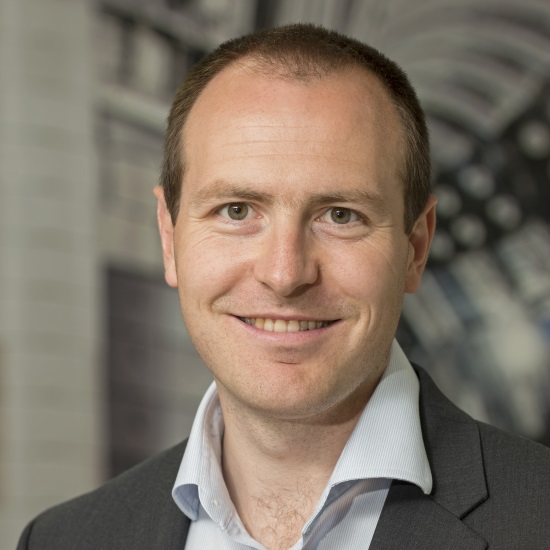
Professor Ian Chapman, UK Atomic Energy Authority, UK

Professor Ian Chapman, UK Atomic Energy Authority, UKIan Chapman became CEO of the UK Atomic Energy Authority and Director of the Culham Centre for Fusion Energy in October 2016. He has held a number of international roles in fusion, including membership of the Princeton Plasma Physics Advisory board, the Chinese Academy of Sciences Plasma Physics advisory board and chairing the IAEA International Fusion Research Committee. His research has been recognised with a number of international awards, including the Institute of Physics Paterson Medal in 2013, the European Physical Society Early Career Prize in 2014, the American Physical Society Stix Award in 2017 and the Royal Society Kavli Medal in 2019. He was made a Fellow of the Institute of Physics in 2013 and became a visiting Professor at Durham University in 2015. |
|
| 14:45 - 15:00 | Discussion | |
| 15:00 - 15:30 | Tea break | |
| 15:30 - 16:00 |
Factors influencing the commercialisation of inertial fusion energy
Industry’s commercialisation approach toward developing a compact and lower-cost IFE pathway to fusion electricity will include the usual factors of scope, schedule, cost, and risk. The technology pathway to economical fusion power (ignition, reproducible modest gain, reactor-scale gain - reactor-scale gain with a cost-effective target - reactor-scale gain with the required repetition rate) comprises the commercialisation scope. Industry assumes significant commercialisation risk in fielding its own pre-pilot-plant research program for this compact-fusion pathway without a federally coordinated IFE R&D program that incorporates the spectrum of driver approaches, the spectrum of target designs, or any of the unique technologies needed to extract energy from any of the variety of IFE driver and target options. The cost of commercialising the mass-production of inexpensive targets for IFE systems and insisting on high reliability, availability, maintainabililty, and inspectability (RAMI) has a major impact on the economics of commercialising IFE power plants. Schedule vulnerability for IFE arises from the sensitivity of time-based roadmap phases to uncertainties in the pace of scientific understanding and technology development, as well as to unexpected and inexplicable changes of the budgeting process. Rather than rely on a time-based roadmap, a milestone-based roadmap is maximally appropriate, especially for industry and investors who are particularly well-suited to taking the risks associated with reaching the target milestones provided by government. Milestones must be identified, a sequence must be optimised, and the needed resources must be delineated. Progress on the above factors, since the outcomes of recent US, UK, and EUROfusion roadmapping exercises were released, will be presented. 
Professor Mark Koepke, West Virginia University, USA

Professor Mark Koepke, West Virginia University, USAProfessor Koepke’s research areas include discovery plasma science (wave-particle interactions, instabilities, turbulence-induced energy transport, dynamical complexity), space-related lab experiments, dusty plasmas, driven-oscillator spatiotemporal phenomena, and plasma diagnostic techniques. Previous positions at NASA-Goddard, LLNL, and University of Washington preceded his 1987 launching of the plasma physics program at WVU. He held visiting appointments at Sandia National Laboratory, Universities of Kiel, Greifswald, and Innsbruck, held Affiliated Professor status at KTH-Stockholm (2007–2010), and has Visiting Professor status at University of Strathclyde, UK (2012–2020). He represented the US on IUPAP (2005–2011) and served (2010–2011) as Acting Research Division Director within DOE’s Fusion Energy Sciences. He is Fellow of APS, JSPS (Japan), and IOP (UK), PPCF journal Deputy Editor, Omega Laser User Group Chair, former APS-Gaseous Electronics Conference Secretary, former APS-DPP Chair, former DOE-SC-FESAC Chair, Affiliated Member of both DOE-NNSA Center for Astrophysical Plasma Properties (2017–2019) and DOE-SC Center for Predictive Control of Plasma Kinetics (since 2009). |
|
| 16:00 - 16:15 | Discussion | |
| 16:15 - 17:00 | Panel discussion/Overview (future directions) |

